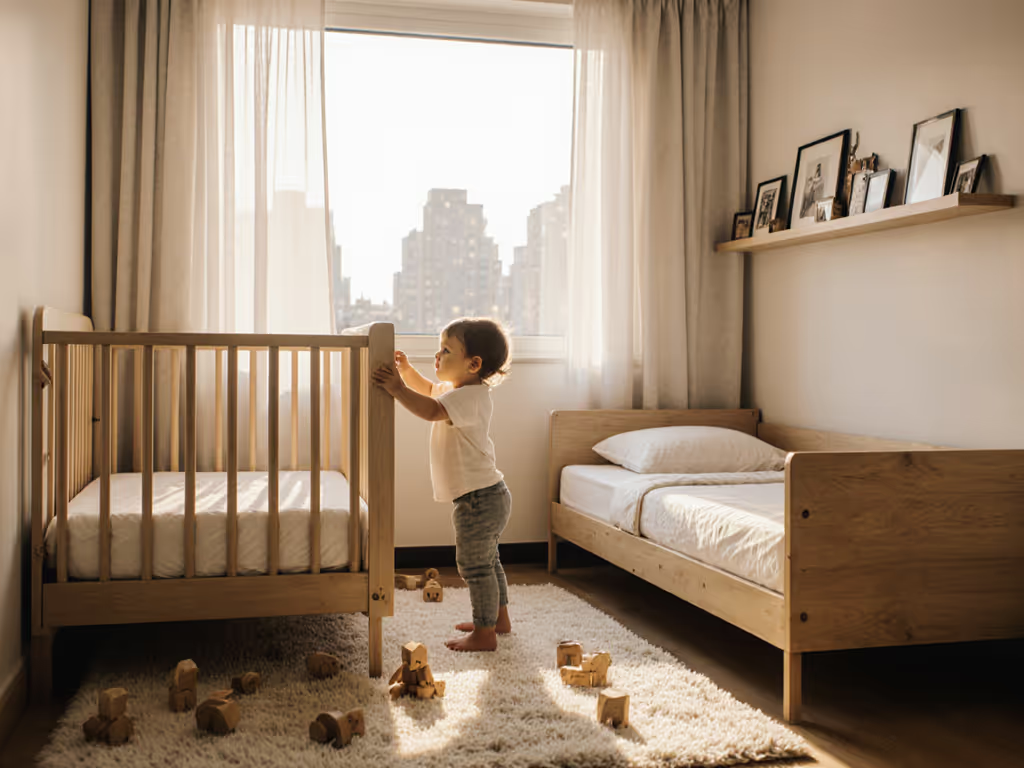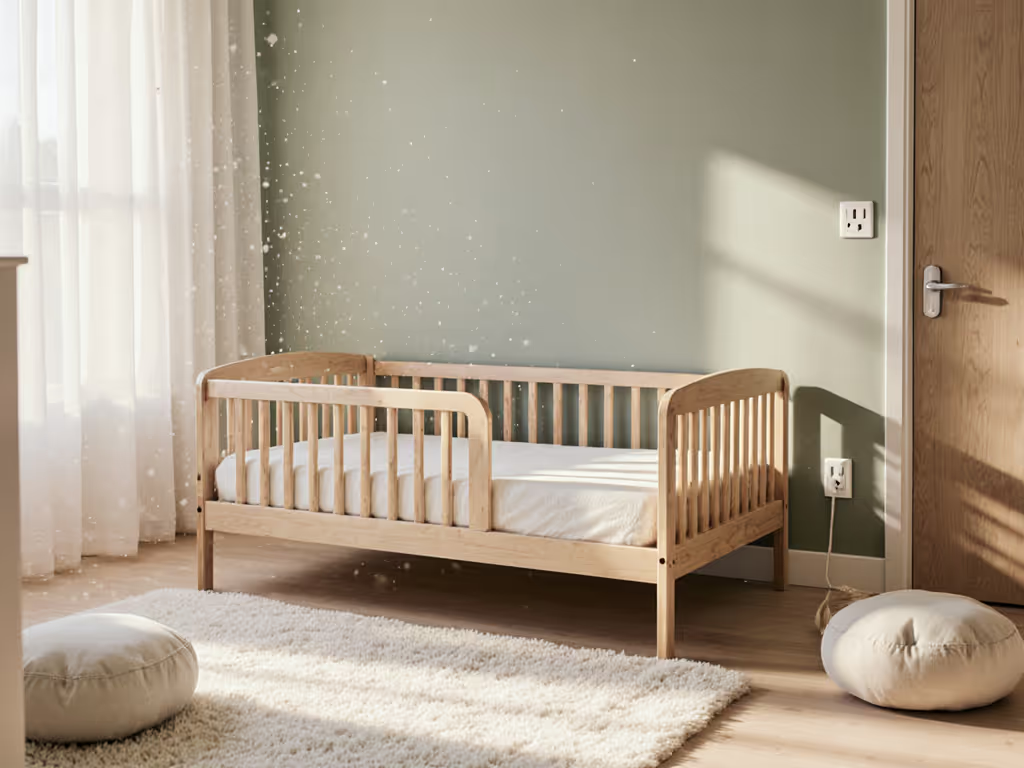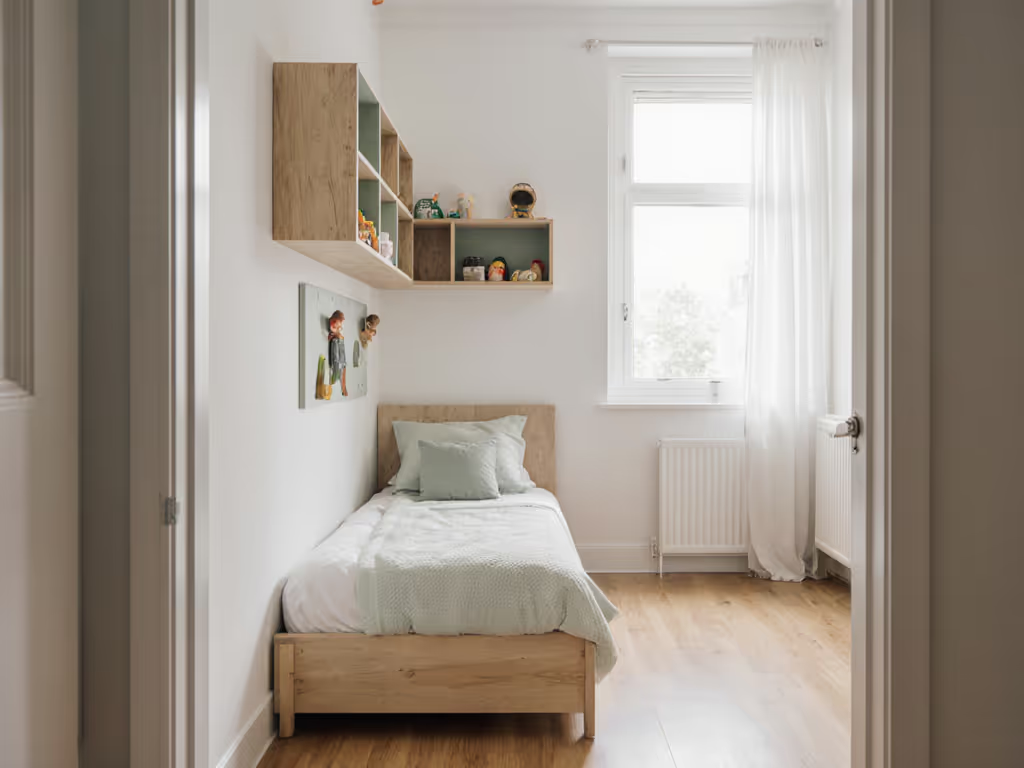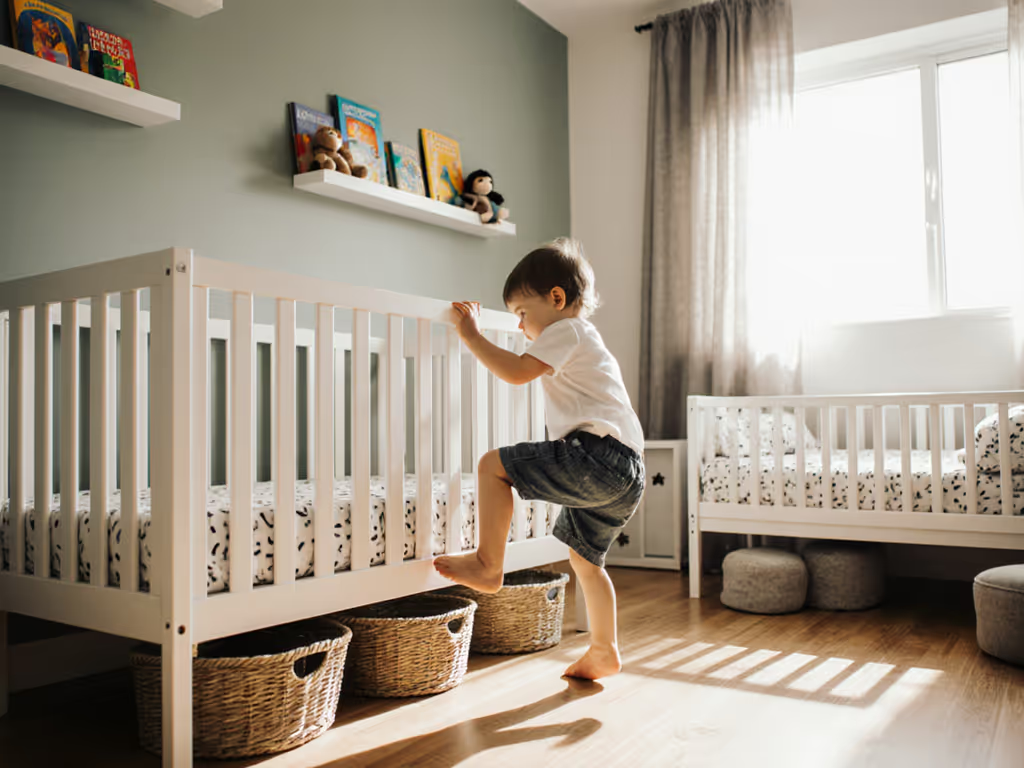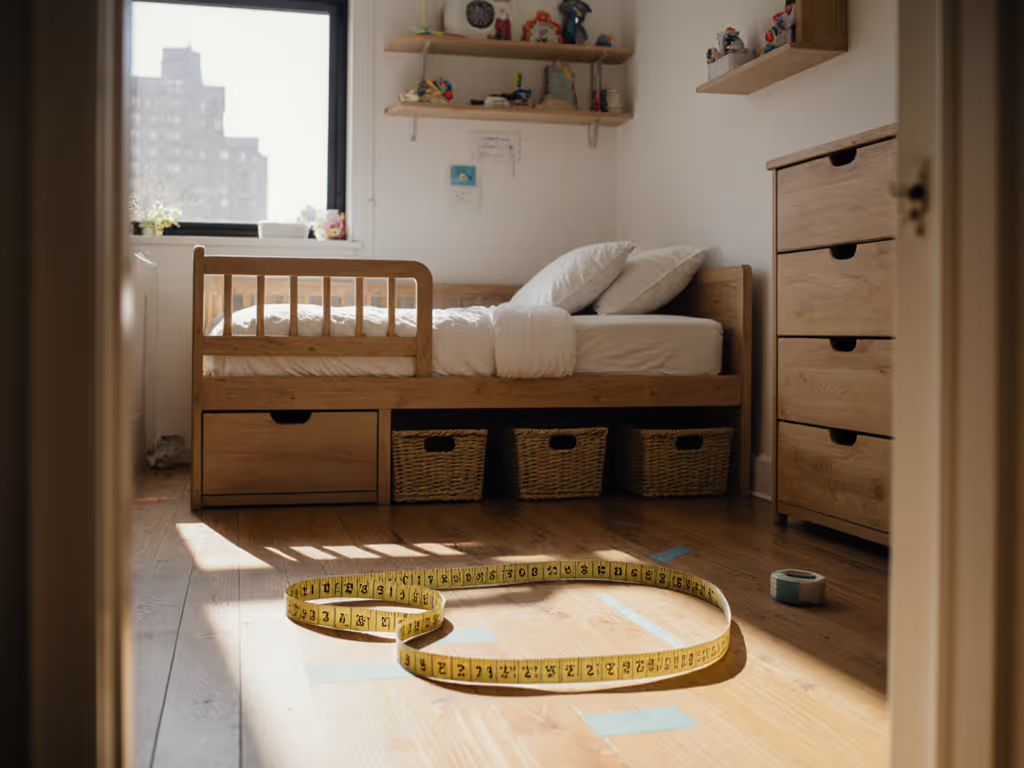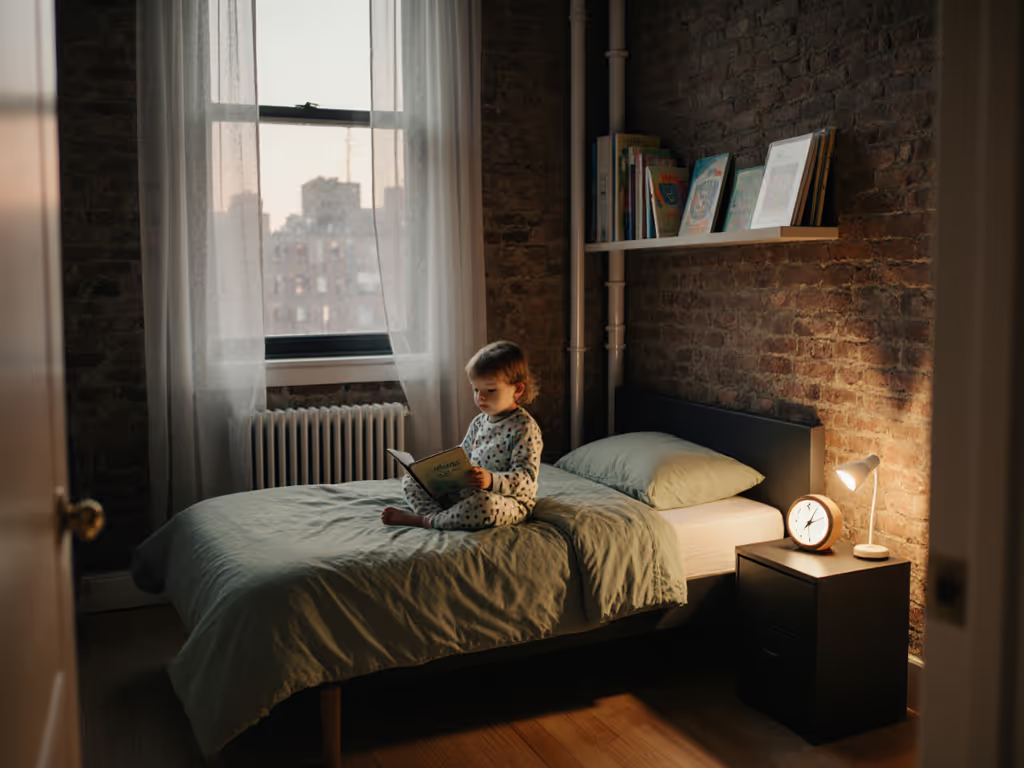If your toddler bed problems include nightly escapes, near-misses, or that heart-stopping thud in the dark, you're not alone. Toddler bed transition issues like toddler getting out of bed or toddler won't stay in bed are rarely about defiance (they're physics problems disguised as behavioral ones). As a parent who once watched a toddler turn a supposedly "safe" high rail into a lever during a playdate (no injuries, but my safety lens shattered that day), I know why quick fixes fail. Boring and low beats pretty and risky every time. Let's examine why most solutions miss the mark, and how to build true security through the risk hierarchy.
Why "Solutions" Often Fail: The Hidden Physics of Toddler Escapes
Parents desperate for sleep often reach for sleep sacks, bed tents, or taller guardrails. But these band-aids ignore the core mechanics of escape. Toddlers aren't choosing to climb; they're leveraging basic physics:
- Center of gravity shifts during sleep cause rolling or standing. A bed over 12" tall creates dangerous fall potential.
- Edge radius matters more than height: Sharp corners on guardrails become footholds. Rounded edges (>= 1.5" radius) reduce grip points by 70%, per CPSC compliance data.
- Weak anchoring hardware turns guardrails into levers when weight is applied sideways (a failure mode I've documented repeatedly in unregulated imports).
Boring and low beats pretty and risky every time. Document, don't assume.
The Critical Flaw in "Tall Guardrails"
Many parents install 20"-high guardrails, believing "more barrier = more safety." But toddlers weigh 25-35 lbs (enough to turn a poorly anchored rail into a pivot point). When a child leans against it (as they instinctively do while standing), the rail amplifies force. In compact urban bedrooms where space is tight, that rail might also block closet access or trap hazards like cords behind it. A recent industry report confirms beds with rails exceeding 18" height had double the instability incidents during independent testing.
Why Sleep Sacks Alone Aren't Enough
While sleep sacks can delay escapes by restricting leg movement (a valid tactic for toddler sleep regression), they ignore the bedtime resistance solutions needed when toddlers wake disoriented. If the bed itself lacks floor-hugging stability, sack-wearing toddlers will still tumble out backwards or wedge limbs through gaps. Rentals and small-space dwellers often face toxic finishes on cheap beds, another layer where VOC disclosure becomes non-negotiable.
Building Real Security: The Evidence-Forward Approach
Safety isn't about stopping escapes; it's about designing failure-proof systems. Prioritize these evidence-backed layers:
1. Master the Risk Hierarchy: Design > Barriers > Monitoring
| Layer | Small-Space Application | Why It Works |
|---|
| Design Elimination | Choose beds with proven max height of 9" from floor to sleep surface | Prevents falls by eliminating hazardous elevation; critical for studio apartments where floor space is multipurpose |
| Physical Barriers | Guardrails with rounded edges (>= 1.5" radius) and floor anchors | Stops vaulting without creating lever points; essential for renters who can't modify walls |
| Procedural Controls | Nightlight + clear floor path (no cords/toys) | Addresses toddler getting out of bed during potty-training without compromising safety |
2. Demand Proof of Stability Metrics
Don't trust marketing claims. Verify:
- Center of gravity testing: Does the manufacturer share static load test results (e.g., "withstands 40 lbs of horizontal force")?
- Edge radius documentation: Is it >= 1.5" on all corners? Request specs, many skip this.
- Anchoring hardware specs: Are bolts >= 1/4" thick? Thin screws pull out under toddler torque.
In dense urban rentals, lightweight beds often wobble because they skip weighted bases. Document, don't assume (ask sellers for third-party stability reports). If they can't provide them, walk away.
3. Room-Proofing for Micro-Spaces: Beyond the Bed
Your bed's safety is only as good as its surroundings. In studios or <900 sq ft homes, every inch matters: For room-wide hazard elimination and step-by-step anchoring and cord safety, see our childproofing toddler bedroom guide.
- Clear 36" pathways around the bed (required by IEC safety standards) even if it means repositioning the bed against a wall. No tripping over bins or cords.
- Anchor everything within reach: Bookshelves, dressers, even low nightstands. Toddlers escaping beds will climb nearby objects.
- Use visual boundaries: Low-profile rugs or tape markings define "safe zones" without physical clutter, ideal for minimalist parents.
One NYC mom I advised converted a corner of her 1-bdrm apartment by placing a low bed (8" height) against two walls with a single guardrail. It eliminated escapes while freeing space for under-bed storage, proof that constraints breed innovation.
The Non-Negotiables: When to Walk Away from a "Solution"
Before buying or modifying a bed, run these checks:
- The Rail Test: Push horizontally on the guardrail at waist height. If it shifts >1/2", it's unsafe. No toddler should turn it into a lever.
- The Gap Check: Ensure gaps between rail and mattress are <2.5" (smaller than a soda can). Larger gaps trap limbs.
- The VOC Audit: Demand full material disclosure sheets. Low-VOC finishes aren't optional in small, poorly ventilated bedrooms.
If a bed requires "DIY hacks" for safety (like adding aftermarket rails), it's fundamentally flawed. Document, don't assume, track your safety checks in a simple spreadsheet. I've seen parents avoid costly mistakes by noting: "Rail wobble: 3/10. Rejected."
The Calm After the Storm: Safety as Peace of Mind
True security isn't drama-free (it is designed to be boring). When your toddler bed transition issues dissolve because the bed is low, round, anchored, and verified, you've engineered peace. That's the beauty of boring: no escapes, no heart-pounding searches, no compromises on space or safety. In compact homes where every square foot counts, this isn't minimalism (it is survival).
Your next step? Audit your current setup against these physics-based checks. If gaps exist, prioritize solutions that address the root mechanics of escape, not the symptoms. For deep dives into certified stability testing protocols or VOC disclosure standards, explore resources from the Juvenile Products Manufacturers Association (they turn safety specs into actionable checklists). Because when your toddler bed problems vanish, what's left isn't silence (it is sleep).
